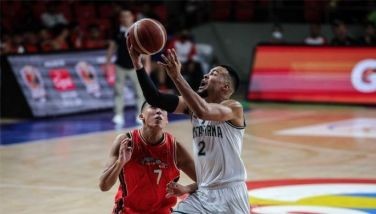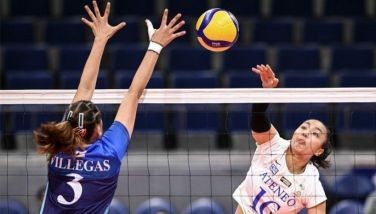Can Rizal Memorial really be saved?
On the morning of Jan. 14, a group of alarmed citizens took interested parties on a walking tour of the Rizal Memorial Sports Complex (RMSC), in the hope of bringing back to life the stirring moments of past sports excellence in the hearts of all who would listen. News has been spreading fast about the impending (though not immediate) demolition of the grand old lady of Philippine sports to make way for a commercial complex, definitely sad news for generations who have and continue to file to its various venues to support their favorite athletes.
In their joint statement, Dakilang Pamana ng Lahi, Inc. (PAMANLAHI) and Advocates for Heritage Preservation (AHP) addressed their letter to current Manila Mayor Joseph Estrada, stating as follows:
“How many more times must we cry, moan and hurl spears at the direction of those whose powers are used for the destruction, diminution and desecration of our Filipino built heritage? Lost already forever, lest you forget, are the finest and memorable traces of our history as a nation – the Admiral Hotel, the Army-Navy Club, Mehan Garden, the Jai Alai and many others, all in the City of Manila.”
Completed in 1934, RMSC was designed by renowned architect Juan Arellano, who ironically also built the threatened Manila Metropolitan Theatre, the Manila Central Post Office and National Museum (formerly Legislative Building), all landmarks of a bygone day. PAMANLAHI secretary-general Lino Atienza also reminds the public that, according to the Heritage Law (Republic Act 10066), “Structures dating at least fifty (50) years old shall be considered important cultural property and shall be protected against exportation, modification or demolition.”
In their accompanying petition to save Rizal Memorial, the two groups recounted several moments of the deep past. Moments that, like genies in a bottle, are rich and powerful in their aging confinement: the 1934 Far Eastern Games (precursor of the Asian Games); Pres. Ramon Magsaysay throwing out the first pitch for the Philippines vs Japan game at the Asian Baseball Championships; the 1954 Asian Games; 1966 and 1970 AFC Youth championships; three SEA Games; 2005 ASEAN Para Games; 2006 Asian Women’s Volleyball Club Championships; the first-ever Asian Five Nations Rugby tournament in the country in 2012, and in the last five years, numerous appearances by the national men’s football team.
But there is much, much more than that. Walk along the baseball diamond’s outfield wall, and you’ll see its history unfolding, from the greatest Filipino players to immortals like Babe Ruth, who led a team of American All-Stars against the country’s best in 1936. Your elders will recall the MICAA and NCAA basketball wars. I vividly remember the San Sebastian vs Perpetual Help series at the end of the 1980’s, young little Eugene Quilban torched the Altas and Bong Hawkins for 101 points in three games. And how many other giants of the games poured their sweat out onto those soaking, decaying floorboards, stopped only by that deafening air-raid siren that passes for a horn? Padilla, Ciria Cruz, Ouano, Martinez, Loyzaga, Lorenzo, Bachmann, Watson, Melencio, Bernardo, Jaworski, Mariano, Adornado, Fernandez, Co, Guidaben, Martirez and the national team’s valiant from the 1980’s onwards who fought increasingly taller, tougher opposition. Of a more recent vintage are our Olympic medalists from the between the world wars to the times of Villanueva, Serrantes and the Velasco brothers, Cerdeña, Wang and now, Diaz. They are legion and growing in number, never diminishing.
Outside, you’ll wander past the places made indelible before the advent of television – and on it – by De Vega, Muros, del Prado, Jaitula, Thomson, Buhain, Lucero, Del Rosario, Fernandez, Ampon, Barrientos; and where countless others etched their names into our record books. Each of those names tells a story, of triumph over adversity, of ascending over mediocrity and vaulting into lasting memory. Those real people lived real moments we will not forget, really. Many of them are still around, and will gladly tell you those stories of their past lives, when glory was a real thing, and the term “legend” was not just thrown around like an adolescent’s superfluous superlatives.
As it stands, the status of RMSC is at a tense, indefinite standstill. As long as the Philippine Sports Commission remains, it will stay standing. Once a new replacement facility – in Clark or elsewhere – is erected, then she may well go the way of the other Manila monuments that have been demolished or moved to unnoticed places: the Gomburza statue fenced in unceremoniously across the National Museum, the Nagtahan rotunda adorning a water company’s private grounds, and a handful of other statues. If we’re lucky, perhaps a piece of the facade with the Roman numeral date of its founding may be left as a reminder, somewhere. Or the new complex in its stead may bear “Rizal” as part of its name. Needless to say, there is really nothing that can be done to stop the fluid tide of progress, unless the national government somehow pulls rank and national interest and overrides the city’s chance to make some money in the perpetually unfair trade between temporary cash and permanent land. But I doubt that would happen. Democracy and free enterprise, you know. Then again, there’s also eminent domain.
Of course, Rizal Memorial may be just concrete, steel bars, layers of faded paint, and old glass. It may be old, deteriorating and increasingly out of date. But invested in it are the echoes of greatness at a time when life was simpler, when there were more records that were undiscovered, when achievement weighed more, when giants grew larger by mere word of mouth, not tawdry highlight reels. That is the Rizal Memorial we remember. And as long as people remember, it will always be there, a monument to our heroes. As part of its privilege to be the country’s capital, Manila could perhaps exercise honor and magnanimity in preserving at least part of RMSC for future generations, in remembrance of all those who have been – and still are – living their lives in service to the Philippines’ sporting legacy.
- Latest
- Trending































